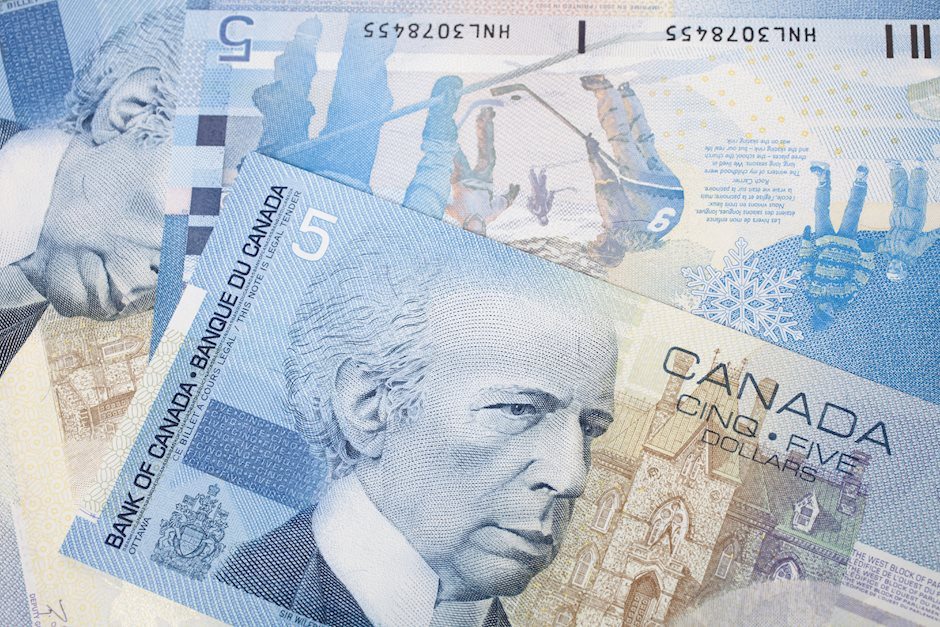USD/CAD extends upside above 1.4150 on bets for big BoC cut
- USD/CAD gains traction to near 1.4170 in Monday’s early European session.
- The BoC expects to deliver another big rate cut at its December meeting on Wednesday.
- US Nonfarm Payrolls came in stronger than expected, rising by 227K in November vs. 36K (revised from 12K) prior.

The USD/CAD pair extends the rally to around 1.4170 during the early European session on Monday. The Canadian Dollar (CAD) weakens to near a four-and-a-half-year low as traders expect another outsized interest rate cut by the Bank of Canada (BoC) at its December meeting on Wednesday.
The BoC is expected to deliver a 50 basis points (bps) reduction on Wednesday after the same move in October, bringing the benchmark rate to 3.25%. “The Bank of Canada’s policy outlook is weighing on the Canadian dollar, and from a technical point-of-view, there’s little to suggest the currency will not keep sliding in the near-term,” noted Shaun Osborne, Scotiabank’s chief foreign exchange strategist.
Furthermore, the threat of US tariffs following Donald Trump’s election might contribute to the CAD’s downside. US President-elect Donald Trump said that he would propose massive hikes in tariffs on goods coming from Mexico, Canada, and China starting on the first day of his administration.
Data released by the Bureau of Labor Statistics revealed on Friday that there were 227K new jobs added to the US economy in November, above the 200K expected by the market consensus. Meanwhile, the Unemployment Rate increased to 4.2% in November from 4.1% in October. Nonetheless, the release didn't shift the view that the US labor market is cooling but not at a rapid pace that would alter the Fed's interest rate-cutting path.
Investors will closely monitor the release of the US Consumer Price Index (CPI) and Producer Price Index (PPI) reports, which are due on Wednesday and Thursday, respectively. These readings could be the main determinant of the Fed’s interest rate decision in December.
Canadian Dollar FAQs
The key factors driving the Canadian Dollar (CAD) are the level of interest rates set by the Bank of Canada (BoC), the price of Oil, Canada’s largest export, the health of its economy, inflation and the Trade Balance, which is the difference between the value of Canada’s exports versus its imports. Other factors include market sentiment – whether investors are taking on more risky assets (risk-on) or seeking safe-havens (risk-off) – with risk-on being CAD-positive. As its largest trading partner, the health of the US economy is also a key factor influencing the Canadian Dollar.
The Bank of Canada (BoC) has a significant influence on the Canadian Dollar by setting the level of interest rates that banks can lend to one another. This influences the level of interest rates for everyone. The main goal of the BoC is to maintain inflation at 1-3% by adjusting interest rates up or down. Relatively higher interest rates tend to be positive for the CAD. The Bank of Canada can also use quantitative easing and tightening to influence credit conditions, with the former CAD-negative and the latter CAD-positive.
The price of Oil is a key factor impacting the value of the Canadian Dollar. Petroleum is Canada’s biggest export, so Oil price tends to have an immediate impact on the CAD value. Generally, if Oil price rises CAD also goes up, as aggregate demand for the currency increases. The opposite is the case if the price of Oil falls. Higher Oil prices also tend to result in a greater likelihood of a positive Trade Balance, which is also supportive of the CAD.
While inflation had always traditionally been thought of as a negative factor for a currency since it lowers the value of money, the opposite has actually been the case in modern times with the relaxation of cross-border capital controls. Higher inflation tends to lead central banks to put up interest rates which attracts more capital inflows from global investors seeking a lucrative place to keep their money. This increases demand for the local currency, which in Canada’s case is the Canadian Dollar.
Macroeconomic data releases gauge the health of the economy and can have an impact on the Canadian Dollar. Indicators such as GDP, Manufacturing and Services PMIs, employment, and consumer sentiment surveys can all influence the direction of the CAD. A strong economy is good for the Canadian Dollar. Not only does it attract more foreign investment but it may encourage the Bank of Canada to put up interest rates, leading to a stronger currency. If economic data is weak, however, the CAD is likely to fall.
Author

Lallalit Srijandorn
FXStreet
Lallalit Srijandorn is a Parisian at heart. She has lived in France since 2019 and now becomes a digital entrepreneur based in Paris and Bangkok.

















